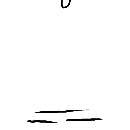The findings, published by Japanese researcher Haruko Obokata and US-based scientists, outlined a simple and low-tech approach in the quest to grow transplant tissue in the lab.

The study was touted as the third great advance in stem cells -- a futuristic field that aims to reverse Alzheimer's, cancer and other crippling or lethal diseases.But it faced hard questions as the Japan-based Riken institute, which sponsored the study, launched a probe last month over the credibility of data used in the explosive findings.
At issue are allegations that researchers used erroneous image data for an article published in the January edition of British journal Nature.
Teruhiko Wakayama, a Yamanashi University professor who co-authored the article, called for a retraction.
"It's hard to believe the findings anymore after so many mistakes in the data," he told broadcaster Nippon Television late Monday.
On Tuesday, the institute said it was mulling whether to pull back the study.
"We are considering whether to retract the report based on its credibility and research ethics, even though our investigation is still underway," it said.
In an e-mailed statement, the journal said: "Issues relating to this paper have been brought to Nature's attention and we are conducting an ongoing investigation. We have no further comment at this stage."
But Hitoshi Niwa, who also contributed to the article, dismissed what he described as minor mistakes, Japanese media reported.
Another co-author, Charles Vacanti, a tissue engineer at Harvard Medical School and Brigham and Women's Hospital in Boston, told the Wall Street Journal: "It would be very sad to have such an important paper retracted as a result of peer pressure, when indeed the data and conclusions are honest and valid."
Harvard is also investigating, reports said.
Hakubun Shimomura, the Japanese minister in charge of science and education, said on Tuesday that the study should be retracted now and re-published it if "they accumulate new facts" that prove its authenticity.
Called stimulus-triggered acquisition of pluripotency (STAP) cells, the innovation was touted as breaking new ground, supplying a lower-cost and relatively straightforward technique.
Stem cells are primitive cells that, as they grow, become differentiated into the various specialised cells that make up the different organs -- the brain, the heart, kidney and so on.
The goal is to create stem cells in the lab and nudge them to grow into these differentiated cells, thus replenishing organs damaged by disease or accident.
The researchers' groundbreaking findings said that white blood cells in newborn mice were returned to a versatile state through a relatively simple process that involved incubating them in a highly acidic solution for 25 minutes, followed by a five-minute spin in a centrifuge and week-long immersion in a growth culture.
Until now, only plant cells, and not mammal cells, have been found to reprogramme back to a youthful state through simple environmental factors.
A key obstacle in the field is ensuring that transplanted cells are not attacked as alien by the body's immune system -- meaning they would have to carry a patient's own genetic code to identify them as friendly.
In 1998, came the first gain: the use of cloning technology -- pioneered with Dolly the sheep -- to harvest stem cells from early-stage embryos grown from the donor's own DNA.
But these "pluripotent" stem cells are controversial as the method entails destroying the embryo, something opposed by religious conservatives and others.
In 2006, a team led by Shinya Yamanaka of Kyoto University, who was a co-recipient of the 2012 Nobel Prize for Medicine, created so-called induced pluripotent stem cells (iPS).
The team took mature cells and coded them with four genes, "rewinding" the cells' genetic programmes to return them to a juvenile state.
The technique had to overcome an early hurdle of causing tumours in cells and still faces efficiency problems -- less than one percent of adult cells are typically reprogrammed successfully.
- AFP/al







No comments:
Post a Comment